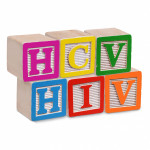When it comes to testing people living with HIV for hepatitis C virus (HCV) antibodies using rapid assays, some tests appear more accurate than others, according to a U.S. Centers for Disease Control and Prevention (CDC) study of three assays reported in the September 15 issue of the The Journal of Infectious Diseases. OraSure’s OraQuick HCV Rapid Antibody Test was the most accurate of the three in specimens that also contained HIV antibodies, followed by Chembio’s DPP HCV Test and, lastly, by MedMira’s Multiplo Rapid HIV/HCV Antibody Test.
Specimens from people living with HIV were 11 times more likely to have a false result than those from HIV-negative people using the Chembio test, and four times more likely using the MedMira test, Bryce Smith, PhD, of the CDC and his colleagues report. HIV infection was unlikely to affect the accuracy using the OraSure assay.
Much like rapid HIV testing, there is a great deal of interest in “point-of-care” (POC) assays that can document antibodies to HCV within minutes of a sample being collected. With regular antibody tests, which need to be processed by labs and can take a few weeks to yield results, many people do not return for their results. With POC assays, results can be provided while the patient is still present, along with important information such as the need for follow-up testing and care.
Companies have developed POC assays to look for HCV antibodies, which indicate past exposure to the virus and the need for viral load testing to determine whether or not the infection is chronic and potentially causing liver damage. OraSure’s assay has been approved by the U.S. Food and Drug Administration, whereas two other lead contenders—Chembio’s assay and MedMira’s test—have not.
For POC testing and linkage-to-care to be maximally effective, however, the assays need to be both highly sensitive and specific. The more specific the test, the lower the risk of false-positive results. And even more important, as the goal is to capture as many real infections as possible through testing, the more sensitive the assay, the lower the risk of false-negative results.
To explore the accuracy of POC tests for hepatitis C, the researchers tested a panel consisting of 1,100 specimens drawn from 1997 to 1999 from people reporting injection drug use. The specimens were tested with the three rapid assays, along with a standard antibody test conducted by a laboratory known to be highly accurate.
Roughly half of the specimens contained HCV antibodies. Forty-three of the 1,100 specimens contained HIV antibodies.
The sensitivities of the three assays, across the board, were 92.2 to 98 percent for the Chembio test, 86.8 to 88.3 percent for the MedMira test and 97.8 to 99.3 percent for the OraSure test.
False results—both positive and negative—varied. Chembio’s assay had 0.2 percent false positives, and false negatives ranged from 2.2 to 3.9 percent. MedMira had 0.2 percent false positives, and the range of false negatives was from 11.7 to 13.4 percent. And OraSure had a false-positive range from 0.4 to 0.6 percent and a false-negative range from 0.7 to 2.2 percent.
Of particular interest, false results using the Chembio and MedMira assays were strongly associated with the presence of HIV antibodies in the specimens, which suggests these tests are less effective among people living with HIV who require testing for HCV antibodies. Conversely, HIV antibodies were not associated with false results using OraSure’s FDA-approved assay.
Smith’s group noted that finding HCV antibody false-negative results among HIV-positive individuals isn’t a new phenomenon. In fact, the 8.5 percent rate of false-negative results among HIV-positive samples across all three assays compared favorably to a European study that found a false-negative rate of 22.4 percent among people living with HIV when using rapid tests. Even standard antibody tests are associated with false-negative results when testing samples from people living with HIV, on the order of 3.8 to 5.5 percent.
Further exploration of POC assays for HCV antibodies among people living with HIV is needed, the authors conclude. They write that it is necessary to “establish an expected proportion of false-negative results. Also, demonstration projects should be conducted to see how these assays would be implemented in HIV testing settings, including the development and testing of HCV-specific prevention messages.”







Comments
Comments